

Juniper procumbens Bonsai Complete Care Guide
Juniperus procumbens 'Nana' - Mounding Juniper, Dwarf Japanese Garden Juniper, or most popularly, just Juniper Bonsai. It's a wildly popular nursery product. We're talking big-industry production, imported on ships by the cargo container, plants passing through many hands on the way to the customer POPULAR.
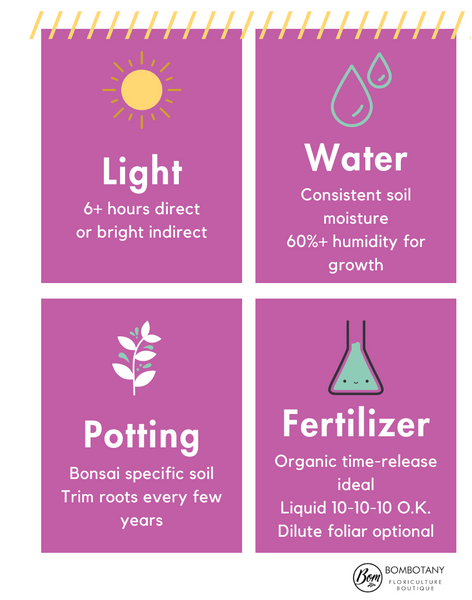
Why? Because, while, yes, it is technically a tree, and it has all the hallmarks of a tree, Juniper is more of a shrub. When left to grow naturally, Juniper procumbens is one of the most resilient ground cover plants around. In landscapes, the roots are connected to the ground where they have access to very consistent moisture, and the foliage has all the humidity of the great outdoors. Juniper procumbens suddenly rises to the top of its class. Evergreen, slow growing, and ZERO maintenance. With the aid of unrestricted root mass, canopies can reach up to five feet or more in diameter. You can find it in many, many corporate parking lots all across the country, and you might not even recognize it.
Even still, Juniper procumbens is, as far as the internet and consumer markets are concerned, an immensely popular bonsai tree -- but why? It only takes three to four years to work one propagation, a "plug", into a proper looking bonsai shape. Other trees might take decades. The real selling point is in the name, though. "Procumbens", or, procumbent. This plant has a predictable low and sprawling growth habit that reliably produces attractive silhouettes, even after branches are severely cut back. Pruning is a rare and quick affair, and there's no defoliation or miniaturization needed to keep things looking classically bonsai.
For you, the consumer, 60% humidity and consistent soil moisture can be high bars to clear. You'll find a lot of naysayers on the internet insisting that Juniper is not an indoor plant. As of writing, I've trained nearly 5,000 Juniper with my own hands. I have dozens of thousands of happy customers across the internet. I'm here to tell you: no plant is an indoor plant. Are ya crazy? Houseplants are just outdoor plants that we have the patience to teach ourselves a little bit about; our own project whereupon we volunteer to be the steward of a living thing, its needs and individuality.
Where you draw the line in terms of "too difficult" is arbitrary. When people come to me with challenging orchids or picky bonsai that aren't working out in-home, the task I give them is to make indoors the new outdoors. Build out your plant nook, invest in things like lights and humidifier solutions if necessary, and take your plant enthusiast journey from beginner to student.
When I'm not obsessing over bonsai and other plants in moonlit druidic rituals (aka Google Scholar, on my phone, in the dark), I call myself an Orchid Vendor - wrangler of untamable floral beasts, those vile haunters of would-be-green-thumbed homebodies everywhere. Orchids were not originally indoors plants, yet that didn't stop naturalists from popping them in Wardian cases, hauling them across seas on wooden ships, and starting generations of indoor horticulture tradition. Now, almost all of us hobby gardeners have met a Moth Orchid or two, kept it on a windowsill at an unnatural angle in a stodgy-bottomed retaining pot, and maybe even watered it with ice cubes. 👀
Just like most popular orchid plant varieties, Juniper procumbens 'Nana' is an Entry Level, but not necessarily a Beginner Friendly plant. It's incredibly easy to care for - but equally easy to mess up if you don't know what you're doing. This is not a "tropical" style bonsai that you can set on the sill, water occasionally, and forget. It's the real deal, and, like many other trees, It has a few needs worth getting familiar with. Namely moisture.
So let's take a look at what caring for a Juniper bonsai tree actually entails, and make sure you and the plant are buckled in for a safe and happy ride together. Let's uncover why it's such a popular introductory plant to the art of bonsai, and what that means for your plant in your home.
healthy arrival, free postage, $41
Light
The goal is 6+ hours of direct or bright indirect light. Juniper bonsai can take lots of direct light, but doesn’t require it, and often suffers from it depending on local culture. The more light and heat there is, the more you’ll need to water. As a rule of thumb, bonsai trees are dealing with deliberately minimized root systems that handicap their ability to uptake nutrients and water. We’re not in the landscape anymore, Toto! It’s part of the art, and what makes the world of tabletop miniature trees go round. Unfortunately, it also means that Juniper Bonsai, already thirsty plants, are prone to drying out quickly, especially in the summer, and critically so in arid climates. If it’s the heat of July, almost everyone in the USA will want to opt for partial shade. If you’re in Nevada, indoors will be much easier than outdoors.
I like to think about houseplants, generally, in terms of Daily Light Integral (DLI), a measurement of the total amount of Photosynthetically Active Radiation (PAR) received by a plant over the course of a day. There’s a deep rabbit hole of science here, so let’s just step over that as quickly as possible. Photons of light are falling from the sky whenever there is light, and plants are only interested in the cumulative amount of “photosynthesis juice”, PAR, that they can collect. A lot like a solar panel! Juniper procumbens, like many (but not all) plants, values 6 hours of direct light exposure roughly equally to twice the amount of time under half as much light. The same amount of chemical energy is eventually manufactured by the plants' chlorophyll molecules regardless.

What’s the exposure in your home/yard like?
Outdoors, partial shade is a safe bet. I like east or southeast facing growing nooks. Ideal placement would offer morning sun and afternoon shade. Morning sun is strong, yet gentle and dappled by the wet sunrise atmosphere, whereas afternoon sun can be dry, harsh, and beaming down at a warmer hour of the day.
Indoors, south and west facing windows have the strongest light. Those with north facing windows or in artificially lit offices will need supplemental lighting (Amazon), which should be on your wish-list anyway if you’re an indoor plant enjoyer! Too little light will lead to larger, looser foliage with greater space between growth nodes. LED grow lights are ever popular, powerful, compact, and energy/wallet friendly.
Don’t run lights 24/7 – conifers need their beauty rest too! Night-time darker and cooler conditions are essential for a plants' ability to conduct respiration. Popular lights often have timers built in, but standalone wall-socket timers are similarly easy to find online or at any big box garden center.
Water
Soil should stay consistently moist. Not overly wet and constantly soggy, but most importantly NEVER dry. Shoot for watering when the top of the soil begins to dry out somewhat, but there’s still moisture down below by the roots. Our Juniper bonsai product comes with a decorative red lava gravel layer that obscures the soil, so we also include a small obsidian accent mineral which can be lifted to check on moisture below that gravel.
Water until water starts coming out of the bottom of the pot. Alternatively, as conventional wisdom goes, soak the bottom of the pot in the sink or a dish of water for 20 minutes or so to thoroughly saturate the media without risk of disturbing the lava gravel top-dressing. When watering in place, I find it convenient to use a misting bottle liberally to hydrate foliage and soil all in one go, but that can be pretty tiring on the hands, so the garden hose with a mist nozzle attachment (Amazon) is my go-to. Junipers are not particularly mindful of hard water or less than ideal pH.
Consistent moisture is key. Depending on your local humidity and temperature, whether or not you use a humidity tray (which you absolutely should, even if it's a take out container lid with no pebbles), how often you mist the foliage, or if you keep the plant outdoors in the spring-fall, this could mean watering almost every day, or as little as once per week. If the soil ever dries out completely, the foliage will become brittle – sometimes irreversibly so, and only in a matter of one or two days. Conversely, if the soil is kept soggy for too long, root rot or fungus can set in.
Juniper Bonsai are native to a very wet climate, so boggy conditions, while not ideal, are definitely more preferable to dry conditions. If you’re heading out of town, there are a lot of gadgets and strategies you can employ to extend soil moisture – like putting the plant in a dark, cool corner, or sitting the plant in a half inch or so of water so that it evaporates away from physical contact with the soil in a day or two. These are not the best ways to treat your bonsai pal, but if you find yourself a sudden houseplant triage surgeon, prioritize soil moisture!
Humidity
Humidity never drops below 60% on the Japanese island mountainsides where Juniper is endemic to. Indoors in the winter, most of our households will hit the low 30% range. Those of us that keep the AC blasting might be under 60% year-round. Humidity goes a very long way with long-term health and keeping the foliage from turning brittle. I strongly recommend the use of a humidity tray and humidifier if keeping the plant indoors full-time, especially for anyone who wants to keep the plant growing year round or nearly year round. Choose a humidifier with a large reservoir, otherwise you'll lose your soul, bit by bit, refilling it every. single. morning. Just me?
Temperature
For all intents and purposes, Juniper procumbens is immune to every temperature you can throw at it. We’ve shipped unheated, uninsulated packages to places like Fairbanks, Alaska in the dead of winter with no issues at all. Juniper is cold hardy down to well below 0°F – but that doesn’t mean it grows well under all conditions. Short temperature dips are no problem, but long-term cold temps, low humidity, and dim light conditions will put the plant through dormancy. If you want to keep a Juniper bonsai growing, you’ll want to keep it above freezing.
Potting
Juniper Bonsai can tolerate a wide array of soils, but to be truly happy, they need a fast draining bonsai style potting media. While these bonsai trees are super thirsty and love moisture, they’re also susceptible to root rot. That’s one of many reasons bonsai purists prefer to use media composed of akadama, pumice, and lava rock. Inorganic mixes also help stunt growth – it’s all part of the school of bonsai!
Compacted, clay heavy soils will not work. Generic all-purpose potting soils, which are usually based in peat moss, will retain far too much moisture and contribute to root rot. Locally available soils marketed for bonsai are often perfectly acceptable. These soils are loamy and full of peat moss, but are also heavily amended with sand and bark to reach that high level of aeration that most bonsai prefer. There are many bespoke potting mixes on the market designed for a wide variety of bonsai. Juniper’s soil requirements fall under the umbrella of normal, so if you’re unsure where to start, don’t be afraid to grab the bag labeled “Bonsai Soil” off the shelf of your nearest garden center.
I like to keep things pragmatic, so I use local organic soil. Depending where you are, it might be easy to find soil with high sand and bark/coir solids content. High aeration organic potting soil mixes offer longer watering intervals, more natural nutrient availability, and reduce the time investment required to keep plants hydrated and healthy compared to inert potting media like akadama. If you’re using a peat heavy soil, like common Miracle Gro products, be sure to amend with sand, pine bark mulch, and/or any other aerators you have on-hand.
Repotting is important to maintain nutrient uptake while encouraging your tree to stay small. Juniper bonsai need to be repotted about every two years while they’re still young. Repotting intervals will grow longer and longer as a plant matures. When the root system begins to bind around the edges of the pot, it’s time to dive in! Don’t be afraid to unpot your tree to inspect root development. Untrimmed roots will eventually strangle your bonsai.
It’s not always necessary to pot up in size. More often than not, it’s best to trim away part of the root system and re-use the same pot. Remove the tree from its pot, gently tease things apart by squeezing, rotating, and shaking, then rinse off as much soil as possible and cut away root mass from the sides and bottom. Be careful not to remove more than ¼ to ⅓ of the root ball altogether. This keeps the plant bonsai sized, rather than shrubby and overgrown, while also leaving enough roots behind to keep the plant hydrated. Target any damaged, brown, or unhealthy roots first. Sometimes whole chunks of old/dead roots fall away just from teasing the root mass apart with your fingers. Healthy roots should be reddish, firm, and even crack-able like hair-thin, al dente capellini fra diavolo.
Note to self: stop writing care guides while hungry.
Late winter or early spring is the best time to repot your plant – just when new growth is about to start after winter dormancy. If you’ve been using organic fertilizers in order to promote symbiotic bacteria growth, leave some of the original soil behind so that they have an easier time replenishing. Freshly trimmed roots should not be fertilized in the month following a repotting session. Juniper benefits from foliar feeding in general, so using highly diluted (more dilute than the label recommends) liquid soluble fertilizer on foliage after repotting will help the plant establish more quickly while the roots are too fragile for standard fertilizer routines.
Fertilizer
While we’re on the topic of fertilizing… We recommend using organic time-release fertilizer to simplify things, keep uptake consistent, and also encourage growth of beneficial bacteria and fungi. Mycorrhiza fungi create a network within the soil, facilitating a symbiotic relationship with a bonsai tree’s root system. They transfer nutrients and moisture to the plant while the plant in turn releases sugars for the fungus to feed off of. Time release fertilizer is best applied as a Juniper enters the growing season in spring.
General purpose/liquid fertilizer is a perfectly acceptable substitute. Just be sure to choose a balanced formulation, e.g. equal NPK numbers (like 10-10-10, or 20-20-20 diluted to half strength). Applying fertilizers in spring will help jump-start your plants' new healthy growth, but for the most vigorous growth, go for a biweekly schedule throughout the growing season. If you’ve recently repotted your bonsai, be sure to wait two to four weeks before applying any fert directly to the root ball. Foliar application of highly diluted fertilizer can be helpful. Yes, you can use the same fertilizer at full or highly diluted strength for maintenance or foliage applications respectively!
Junipers are not heavy feeders, and organic soil is often already doing some of the legwork. With fertilizer needs lower than most ornamental plants, time-release and liquid soluble fertilizer are an either-or, not both, situation. Don’t fertilize outside of the active growing season, and never fertilize a dormant plant.
Training & Pruning
You can take so many artistic liberties with Juniper Bonsai. The aesthetic direction is always your choice. “Upright”, “Cascade”, and “Windswept” are the three categories I like to use when taking orders for custom trees. Juniper procumbens plants have a “mounding” growth habit, so they can take severe pruning and quickly turn around into an attractive canopy after only one or two years. First, they’ll grow in an upright, topiary sort of shape (the mound). The following season, after having stored plenty of energy, they’ll put out long, wispy primary branches.
Bonsai typically require detailed cultivation, pruning, and styling of each plant, but that doesn’t have to be the case with our Champion of Low Maintenance, Juniper procumbens 'Nana'. Wispy growth leads can be pruned back to control growth direction. A cut in one place, to a larger branch, strongly encourages continued growth in others. Wiring is generally not necessary because of that low “procumbent” growth habit. These are my workhorse snips (Amazon).
The best time of year to prune and style your bonsai is at the end of its dormant season in late winter/early spring. The very, very long tradition of cultivating bonsai leaves us with a wealth of knowledge. The sky and your imagination are the only limits in terms of pruning, pinching, scarring, and training the branches and foliage of your tree. Bonsai training itself is a super in-depth topic best discussed at length in another article.
Juniper does not require defoliation/reduction like many deciduous bonsai - these evergreen needles are small enough in their natural state. Brighter light does encourages denser canopies and smaller leaves.
Pests & Diseases
Juniper is largely resistant to pests and diseases in the home and garden setting, but there are a few to keep an eye out for. Many consumer Juniper procumbens are grown in Florida, so here’s a great jumping off point for some further reading on common Juniper ailments. Mites and other insects can be treated with horticultural oils (like neem oil solution) fairly easily. Root rot and foliage blight can be kept in-check by dialing in soil moisture consistency and humidity levels.
If you do find yourself with root rot or foliage blights, things are probably too wet. Rotting things have to go. There are fungicidal products on the market to help out if you suspect your Juniper is suffering from a fungal infection. Powdered cinnamon is a natural antifungal agent, and also a highly controversial household remedy for rot. Cinnamon is caustic and likely to damage plants with sensitive roots. If you ask me, it’s still a great “welp I’m not spending a cent on this jerk of a plant” sort of solution, and still acceptable for “cauterizing” foliage cuts, so to speak.
Dormancy
Does Juniper procumbens bonsai have a dormancy period? No. Here we have more myths to dispel. There’s a thought virus spreading through the community: that Juniper will die if not allowed to undergo dormancy. This is true for so many bonsai and other plants under the sun, including other junipers, but not Juniper procumbens. When people say dormancy, they tend to mean endodormancy. Let's talk about “endodormancy” versus “ecodormancy”.
Endodormancy is a process by which plants, especially woody ones, undergo a period of internally regulated dormancy in response to regular adverse conditions. Plants that undergo endodormancy are reacting to things like daylight hours or days spent under a certain temperature temperature. The plant’s growth and metabolic activity slows, or stops altogether, and synchronizes with the seasons to help protect energy reserves. Almost mechanically, they wait for requirements to be met before resuming growth. While conditions are favorable, growth can even be suppressed by a plant that has already been triggered. Endodormancy is most common in plants native to temperate climates, where they experience distinct seasonal changes, including cold winters.
Ecodormancy is a process for plants adapted to regions with relatively consistent environmental conditions throughout the year. These plants react temporarily to adversity that is not necessarily seasonal, like lack of available water, too much heat or cold, or, in Juniper procumbens’ case, too little moisture and too little light. Juniper bonsai reacts to dimly lit, low rainfall, cold winters by storing as much energy as possible while waiting for things to change. Think tropical areas that experience things like seasonal drought. Ecodormancy is something we can control because it's an external regulatory process, not internal like endodormancy.
Juniper procumbens is native to the mild coasts of Southern Japan where humidity is abundant. In winter, humidity tapers back a little, while available light, water, and temperatures take more significant dives. The wet and warm climate on the island of Kyūshū, where Juniper procumbens is said to have originated in the wild, is in some ways comparable to places like the American Pacific Northwest or the Southeast depending on time of year.
Juniper bonsai undergoes ecodormancy, and there’s no evidence I found that suggests endodormancy is on the table. If there is endodormancy, it’s magnitudes less impactful than with other bonsai. Consider the climate in Fukuoka, Japan. If Fukuoka were assigned a USDA Hardiness Zone, it would be 10B – that’s equivalent to most of Miami-Dade County, Florida!
Anecdotally, at Bombotany, we grow our 3+ year old juniper plants in Florida USDA Hardiness Zone 10, where it rarely, if ever, freezes, but where sunlight, rain, and humidity are more sparse outside of hurricane season. Every year, my inventory of trees tinges darker green, slows down but doesn’t stop growing, and remains soft to the touch. Back home during winter in Langhorne, Pennsylvania, my Juniper bonsai would turn blue, harden off, and give me a winter-long silent treatment. Come summer, the trees behave the same – bright yellow green, soft and slow growing new primary branches, canopies and last year’s bald spots filling in as new foliage on tertiary branches unfolds.
Whatever dormancy might exist, it can be subverted if you’re able to provide warm, bright, and moist conditions year round. If my winters were longer than a few weeks, I would pop my nursery stock in a hoop house to keep them summer-fresh year round. Fortunately, I don’t have to!
So… Indoors or Outdoors?
There’s no way around it. Juniper Bonsai will grow more vigorously if kept where light and moisture are more abundant, and that’s usually outdoors. Juniper is accustomed to being connected to the water table where soil remains at least slightly moist at all times. Outdoor bonsai care is an all-around easier road to travel during warm/wet seasons. If you have the resources, it’s my official recommendation that a Juniper Bonsai be kept outdoors. In virtually all temperate regions of North America, Juniper can be kept outdoors with minimal supervision, especially on the east side of one's house. In places where it rains regularly, this often means a ZERO maintenance bonsai plant. Still, Juniper Bonsai can suffer from heat and dryness, even in wet climates.
Juniper Bonsai absolutely can thrive indoors. During the winter and in dry climates, indoors might be a requirement. The trick with proper indoor care is lots of light, hydration, and especially humidity. Lack of adequate light and/or chronically too low humidity are the two most common hiccups customers come to me for help with. Make sure you dial those two in for the happiest, healthiest plant!
Keeping the plant outdoors 24/7/365 in the vast majority of continental USA is going to require a period of ecodormancy that lasts at least three months. As nighttime temps dip below the 40’s, and daytimes below the 50’s, and humidity and sunlight evaporate, Juniper will stop growing. During dormancy, Juniper needs less, but still consistent, soil moisture to stay alive – which can be almost unobtainable in the dry and windy winters some of us have. For that reason, Juniper Bonsai owners in temperate climates should strongly consider bringing the plant inside or sheltering it in a semi-heated shed or garage for the harshest lengths of winter. Lightly sheltered and shadier outdoor locations work in milder or wetter, heavy snowfall climates. No active foliage growth going on leaves the plant apathetic towards bright light, so you can get away with dim conditions as long as hydration is carefully monitored.
Hey – thinking about adopting or gifting one?
Don't forget to grab 10% off first!
At this point, I hope you’re not too intimidated by Juniper Bonsai’s care requirements. Juniper Bonsai are relatively easy plants to care for when you’ve tucked a few bits of essential knowledge under your brain belt. So much of being a good steward to your bonsai tree is using your common sense and better judgment – taking the time to make sure you understand the plant in front of you. They love moisture, they hate dry air. They grow slowly, prune easily, and adapt to just about anyone’s artistic vision given enough time. Juniper Bonsai are a popular choice for gifts – and for good reason! If you have any questions, feel free to comment below or shoot me a message through the chat widget.

This article was published January 9, 2022, revised May 4, 2024.
This article contains affiliate links.
Juniper Procumbens 'Nana' Bonsai Tree in Traditional Ceramic - 3-4 Years Old
$58.00
FREE Standard Shipping
No weather risk!
100% healthy guarantee
Juniper Procumbens is a dwarf Japanese Juniper with bright green growth that blues slightly as it ages. Technically a shrub, this trained bonsai tree is sought after by houseplant enthusiasts everywhere. Juniper Procumbens - the plant most of us picture when someone mentions bonsai. Trouble free and easy to care for, Juniper Procumbens 'Nana' is a very popular and well adapted houseplant variety that prefers moist and humid conditions, making for a great beginner bonsai tree.
✿ 3-4 years old & approximately 5-6" height
✿ Traditional style hand crafted glazed ceramic bonsai pot
✿ Accent mineral from assorted obsidian varieties
✿ Premium red lava rock top dressing
✿ Fertilizer (Fert) and Humidity Tray Add-ons available, more below












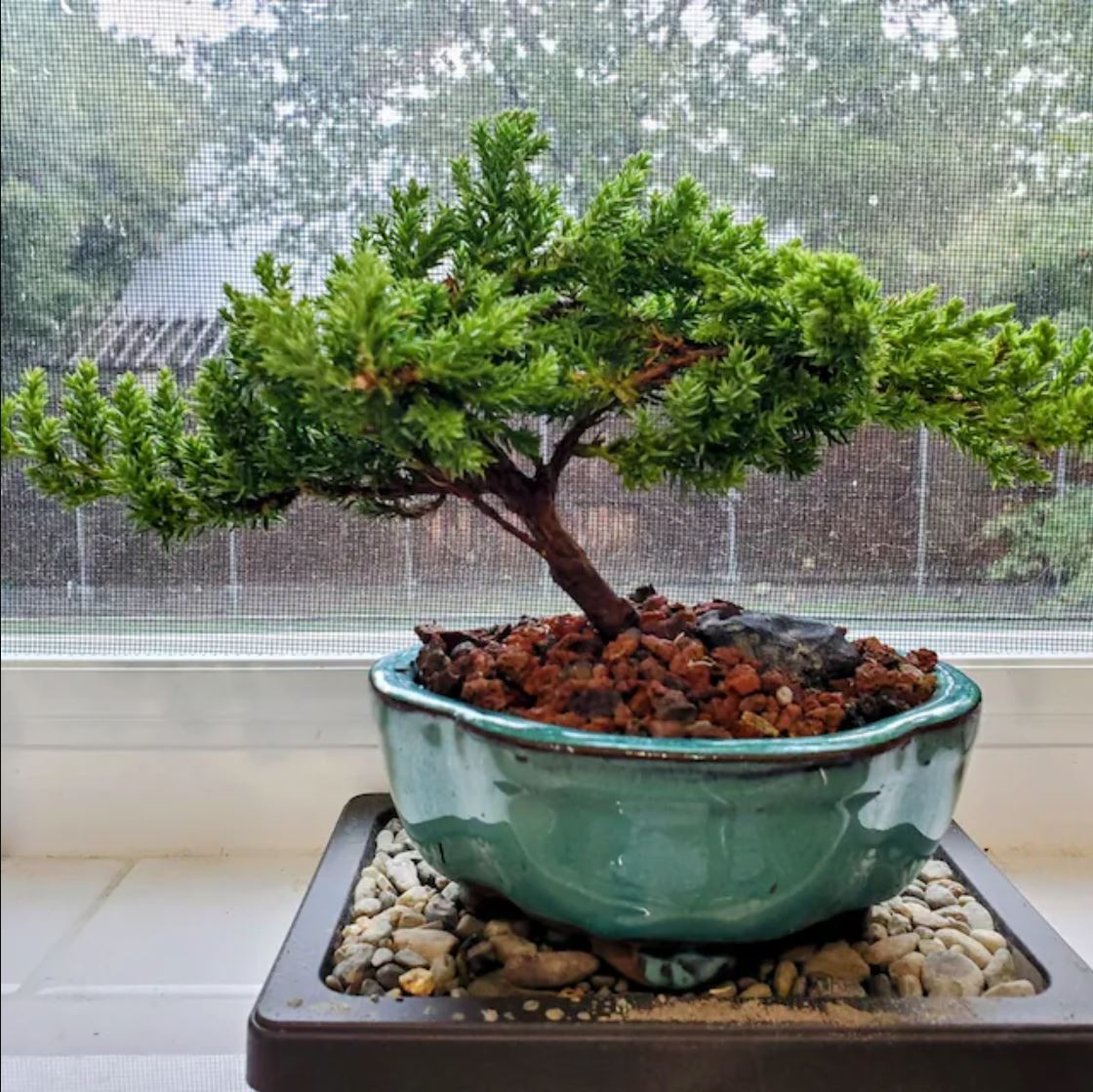
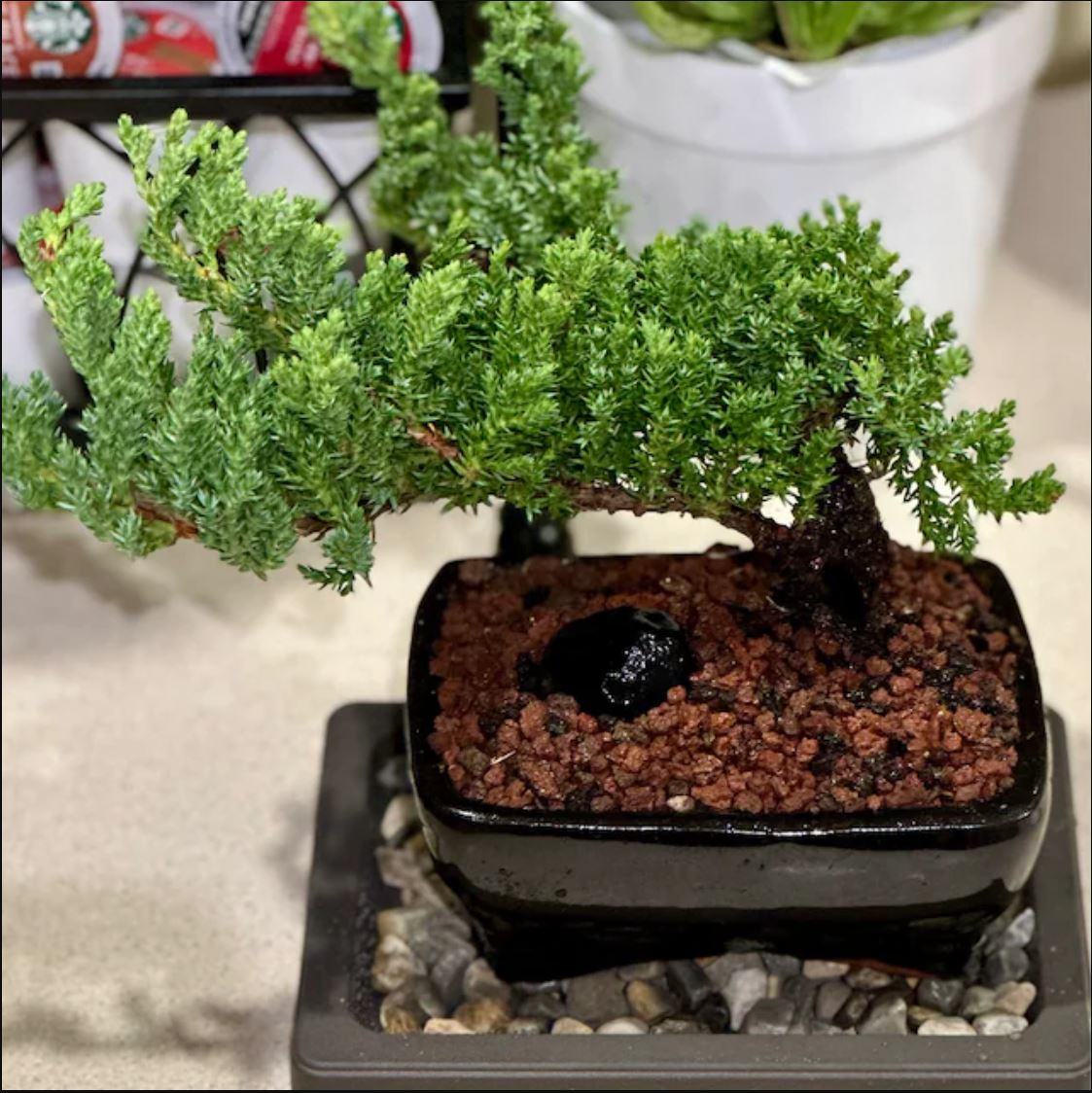
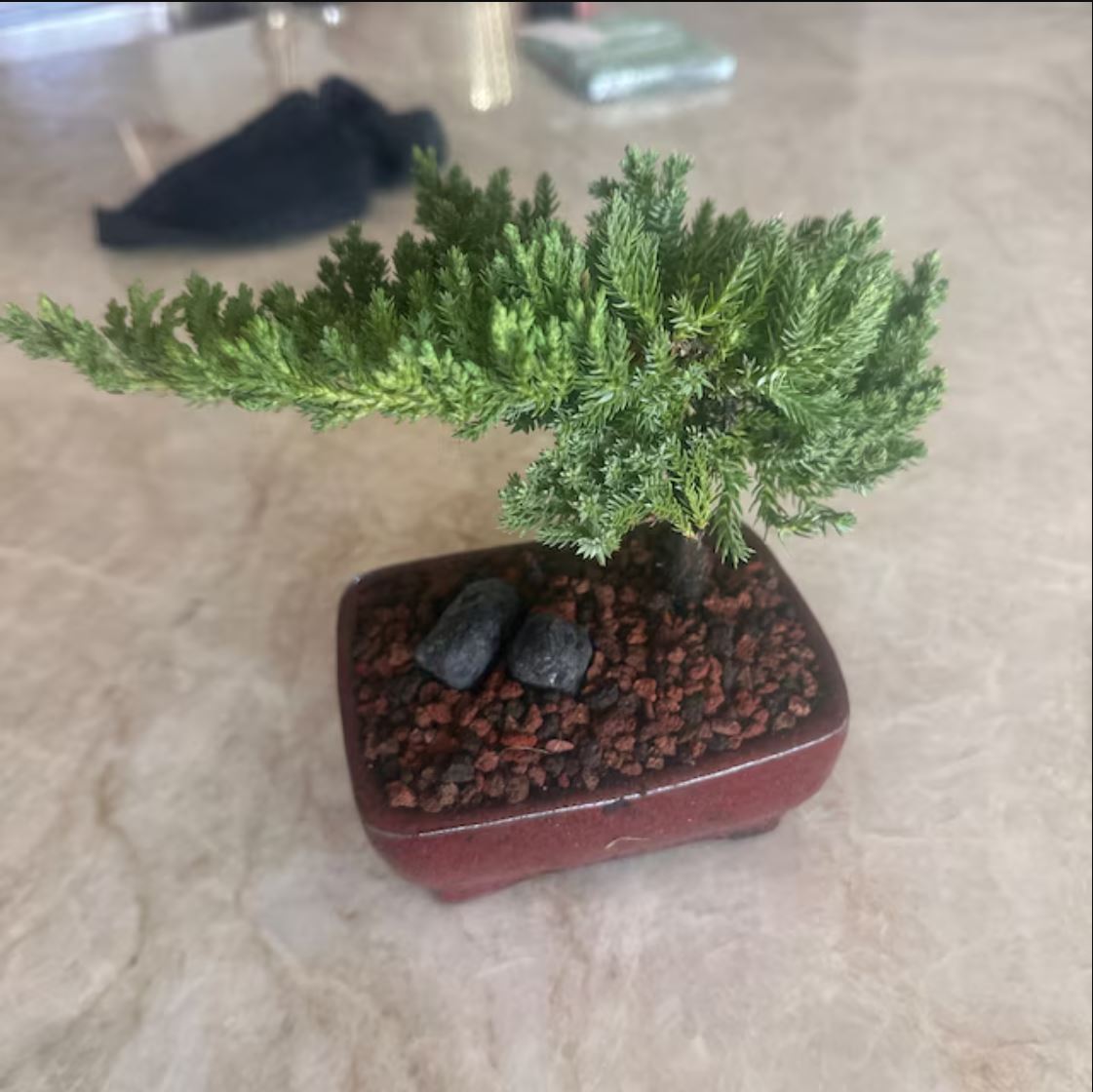
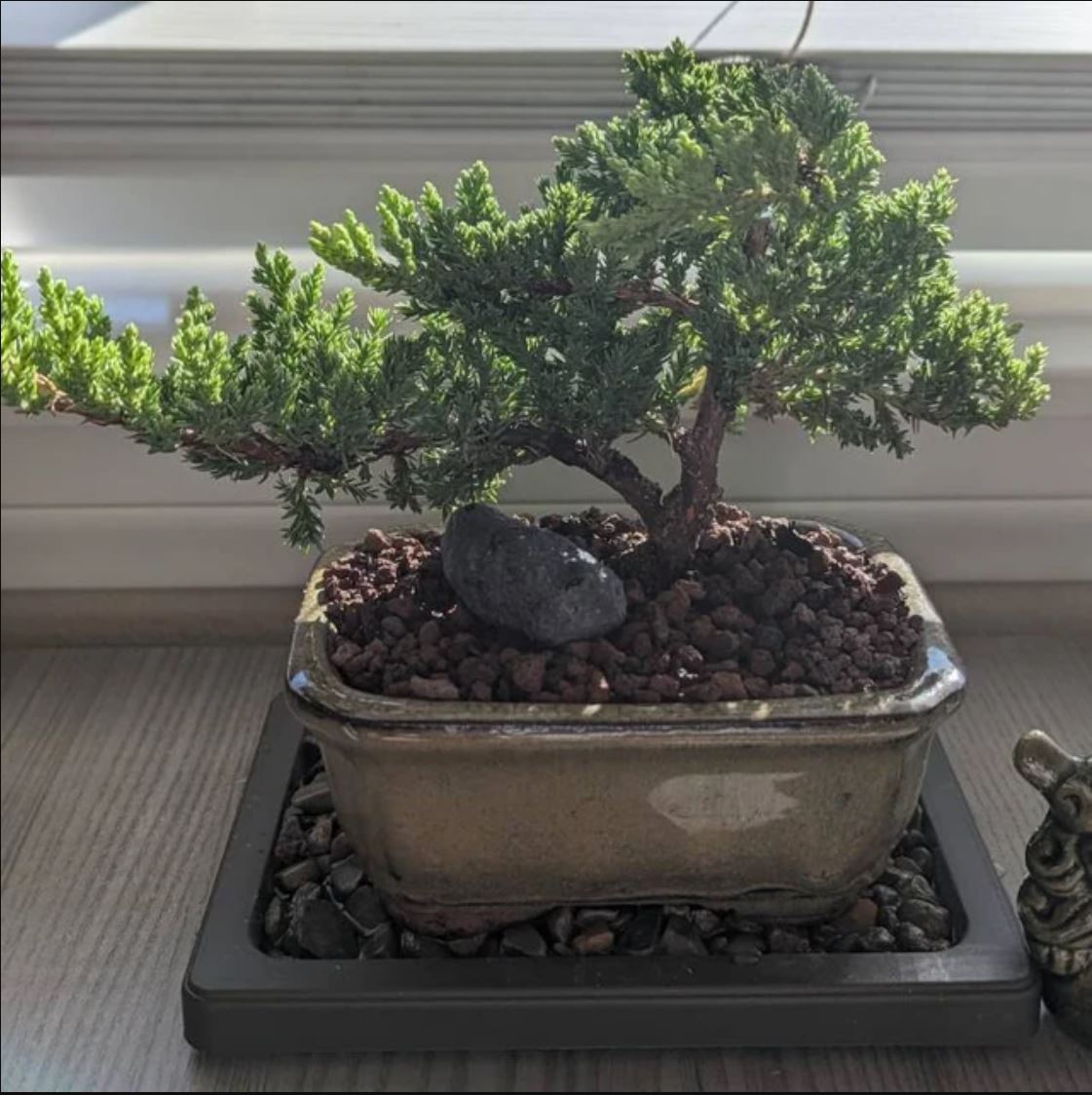
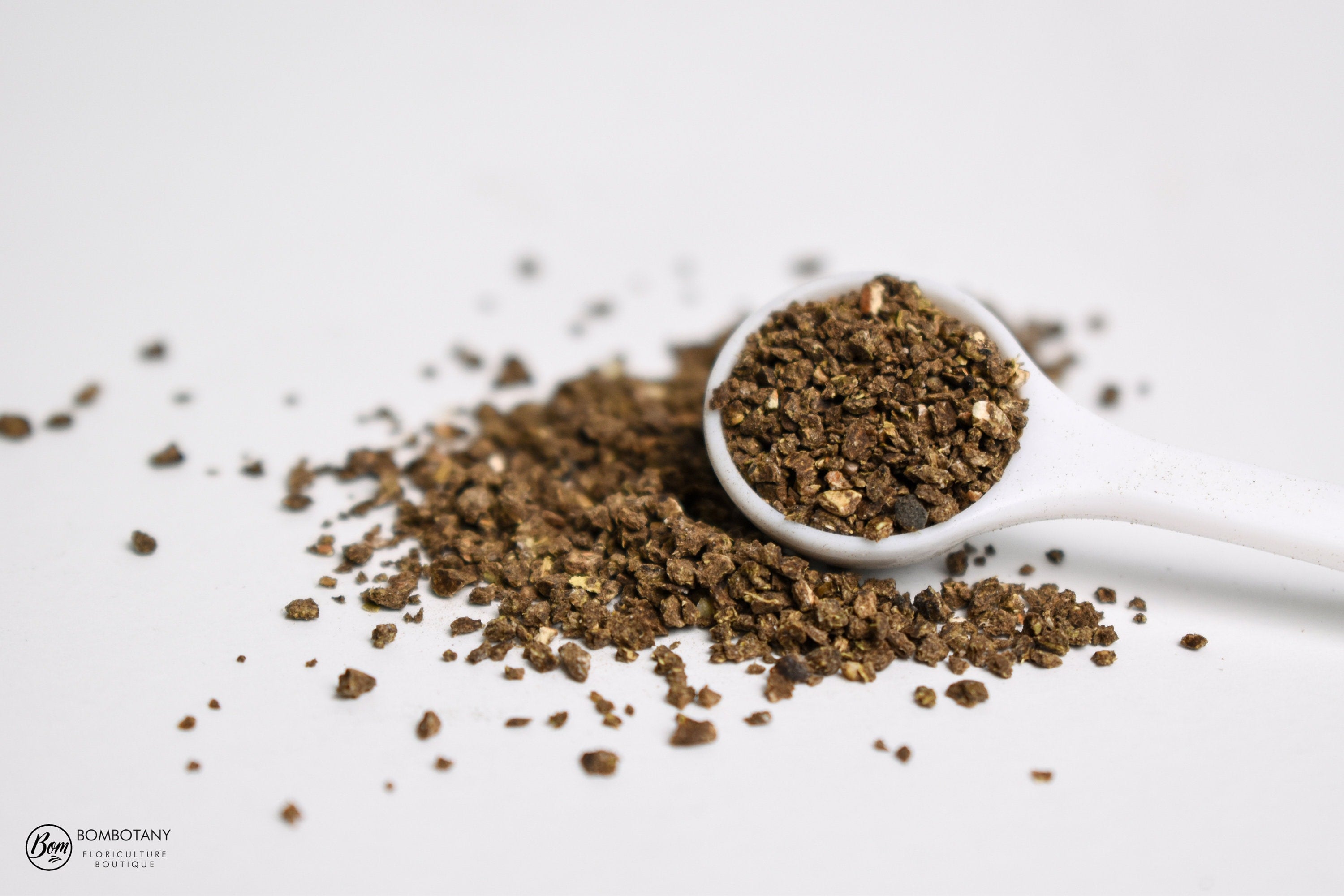





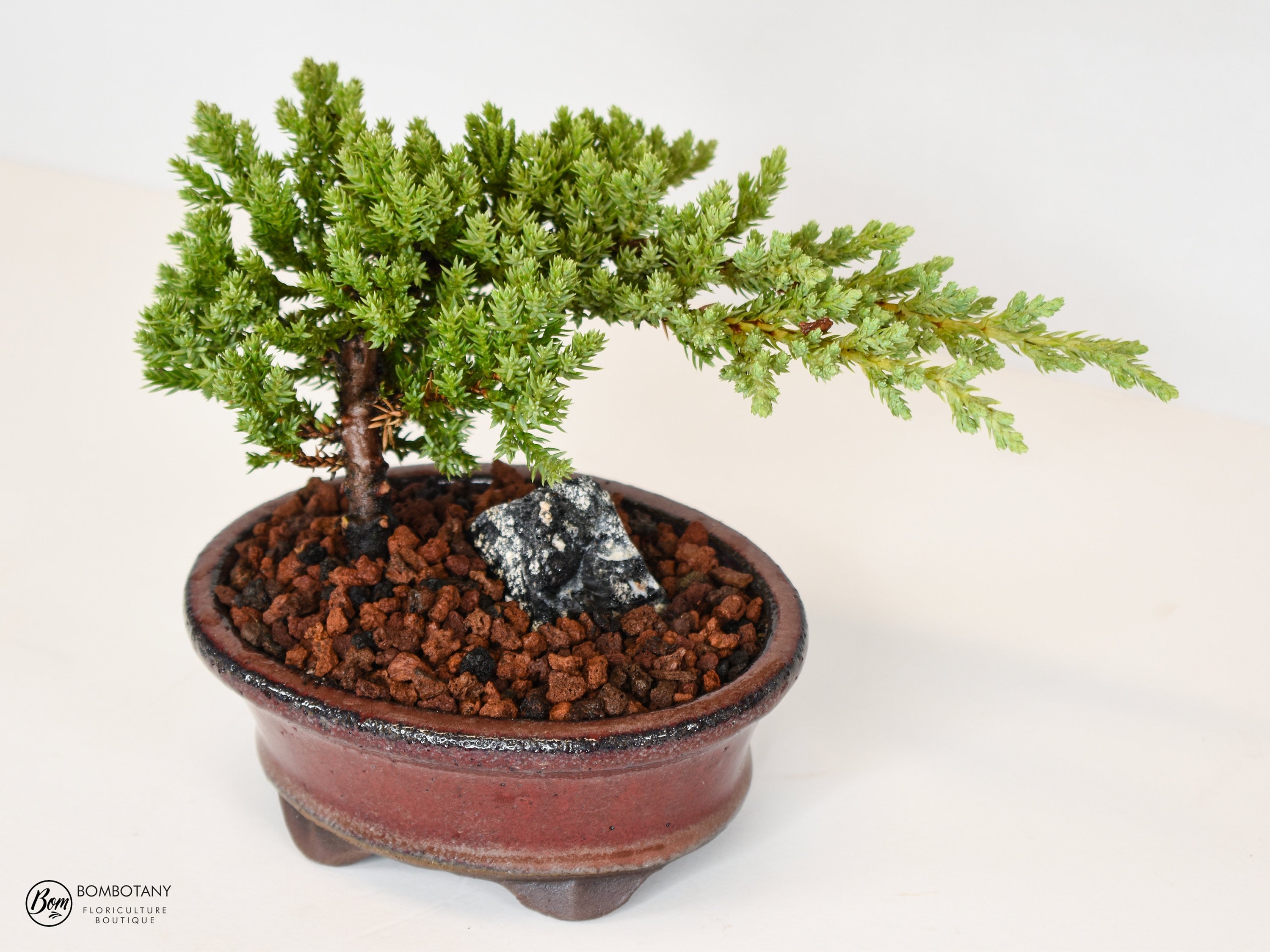


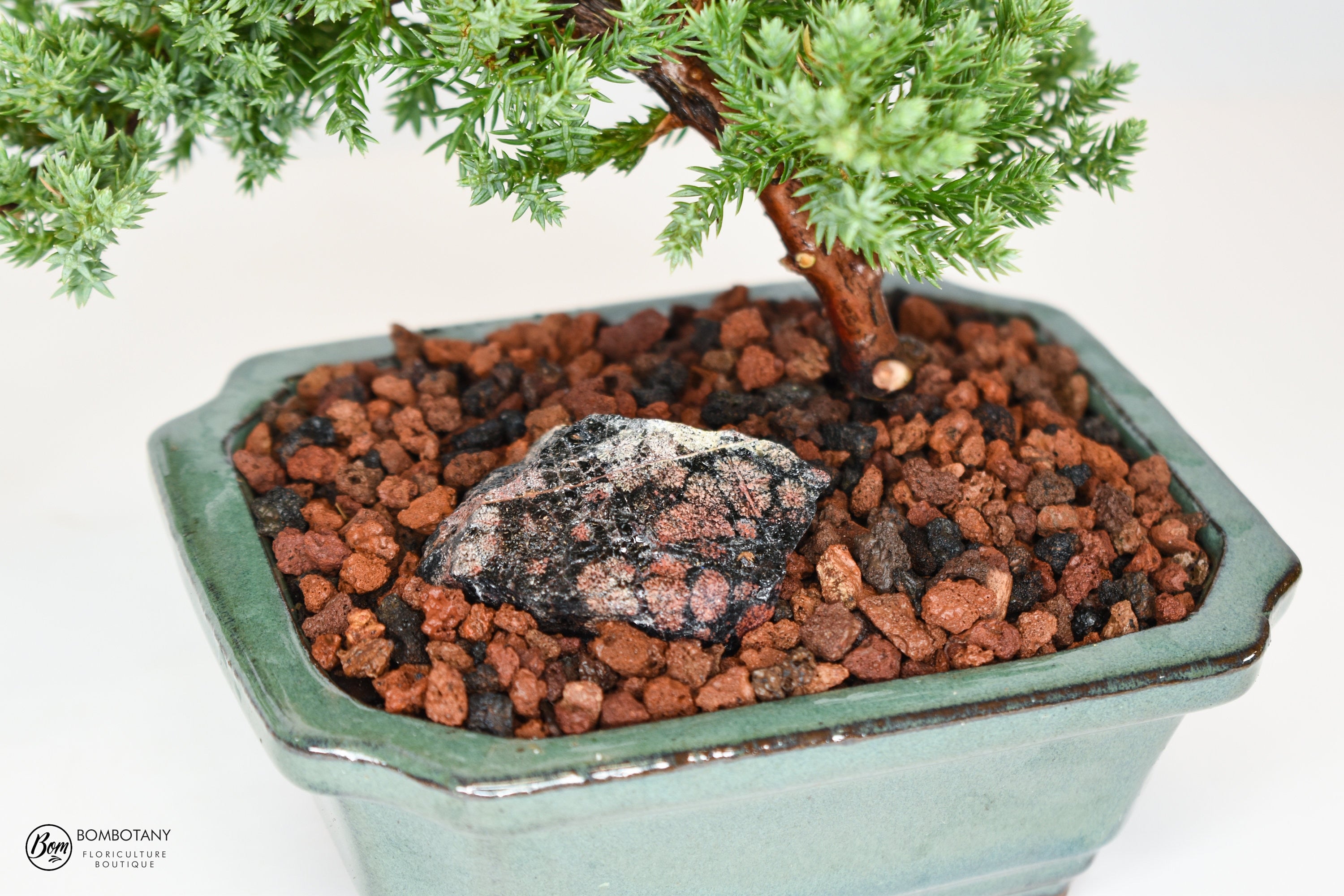
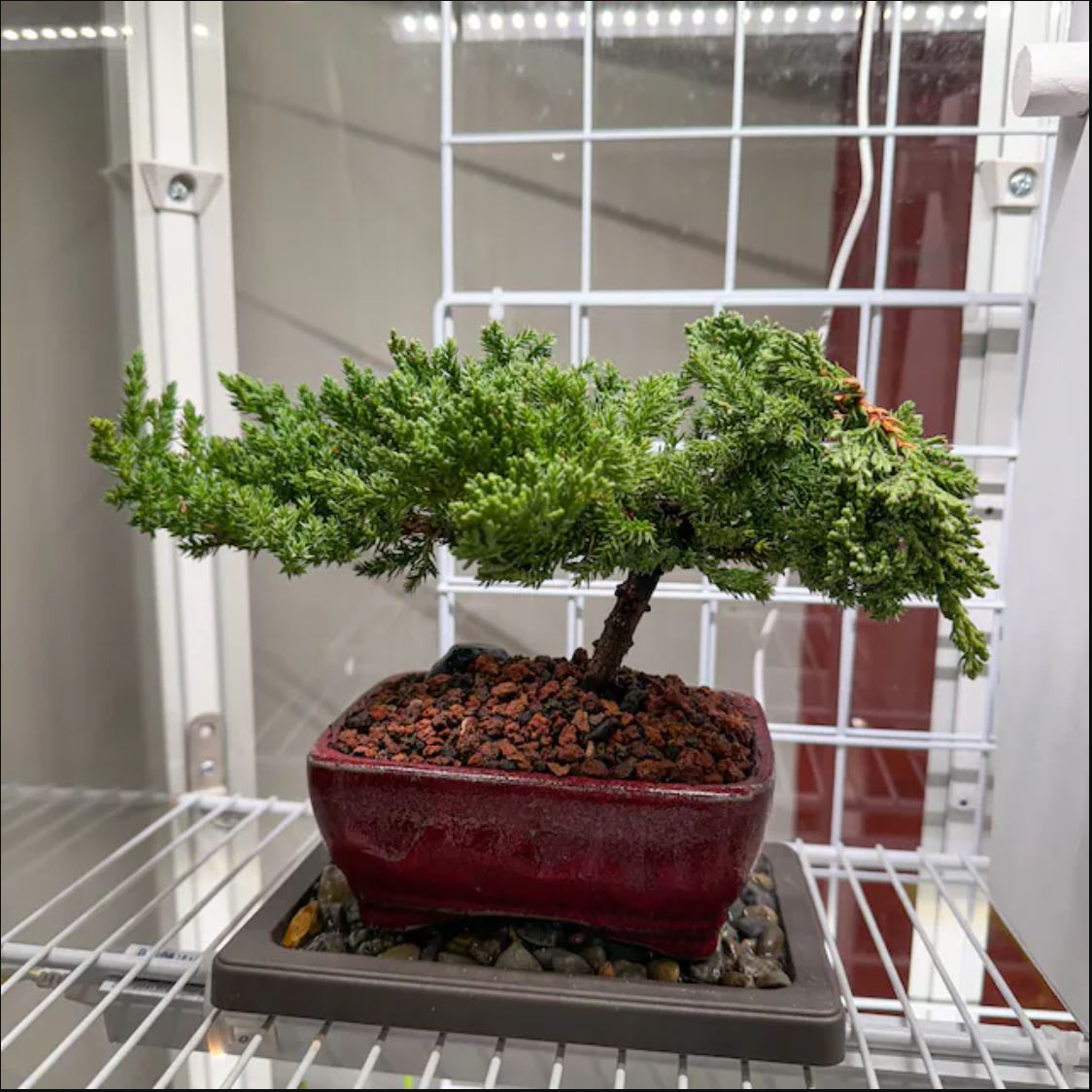
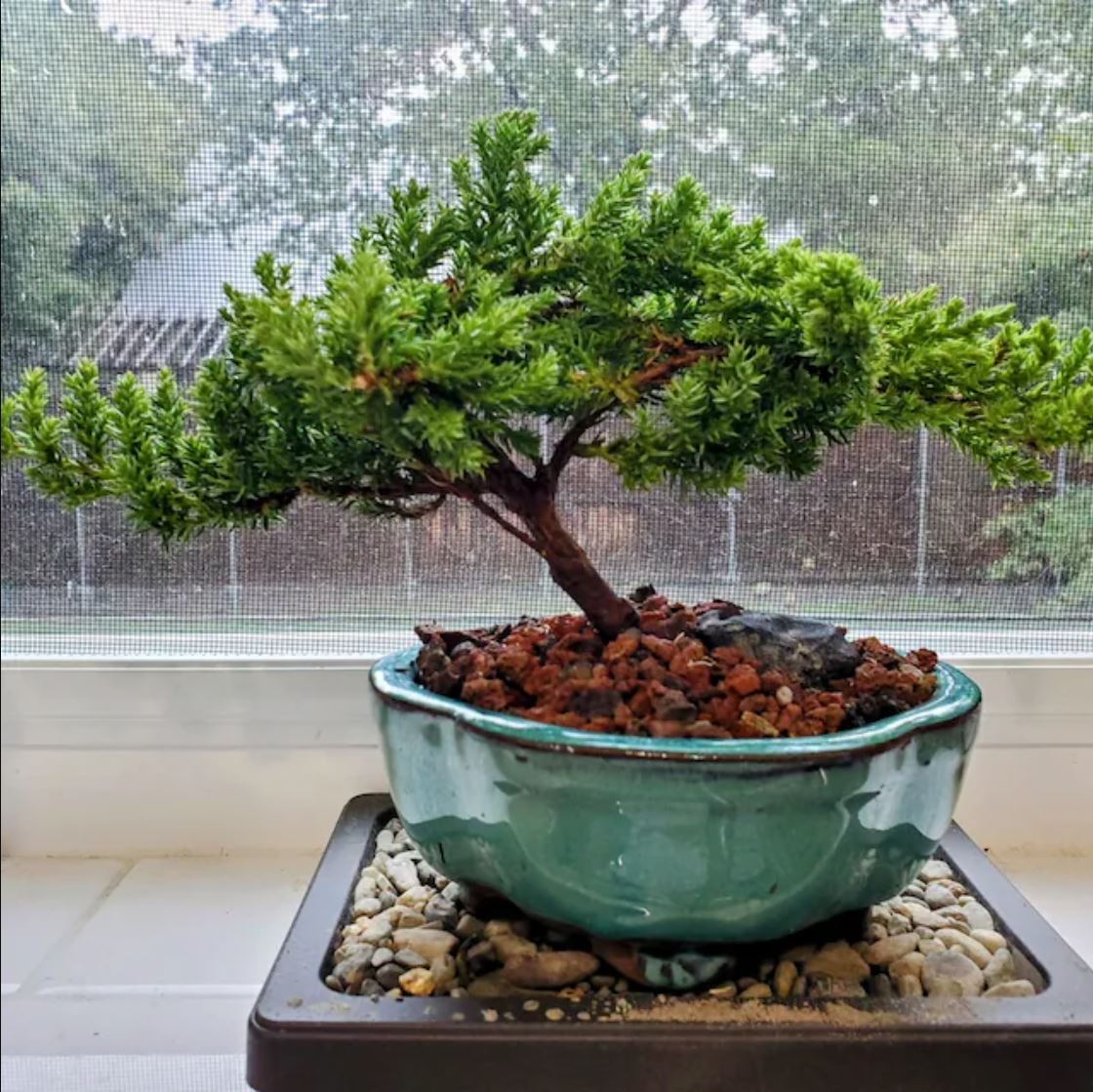
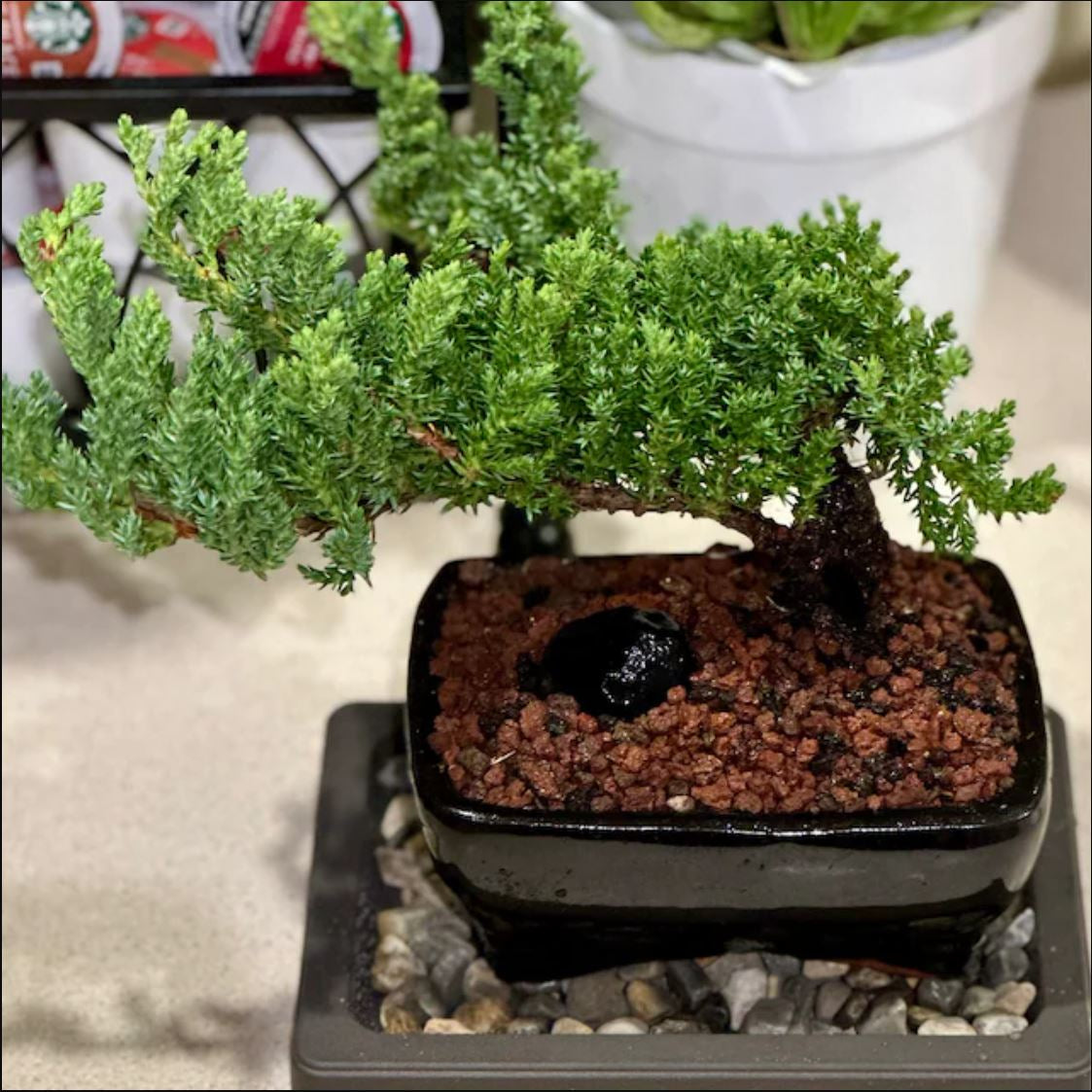
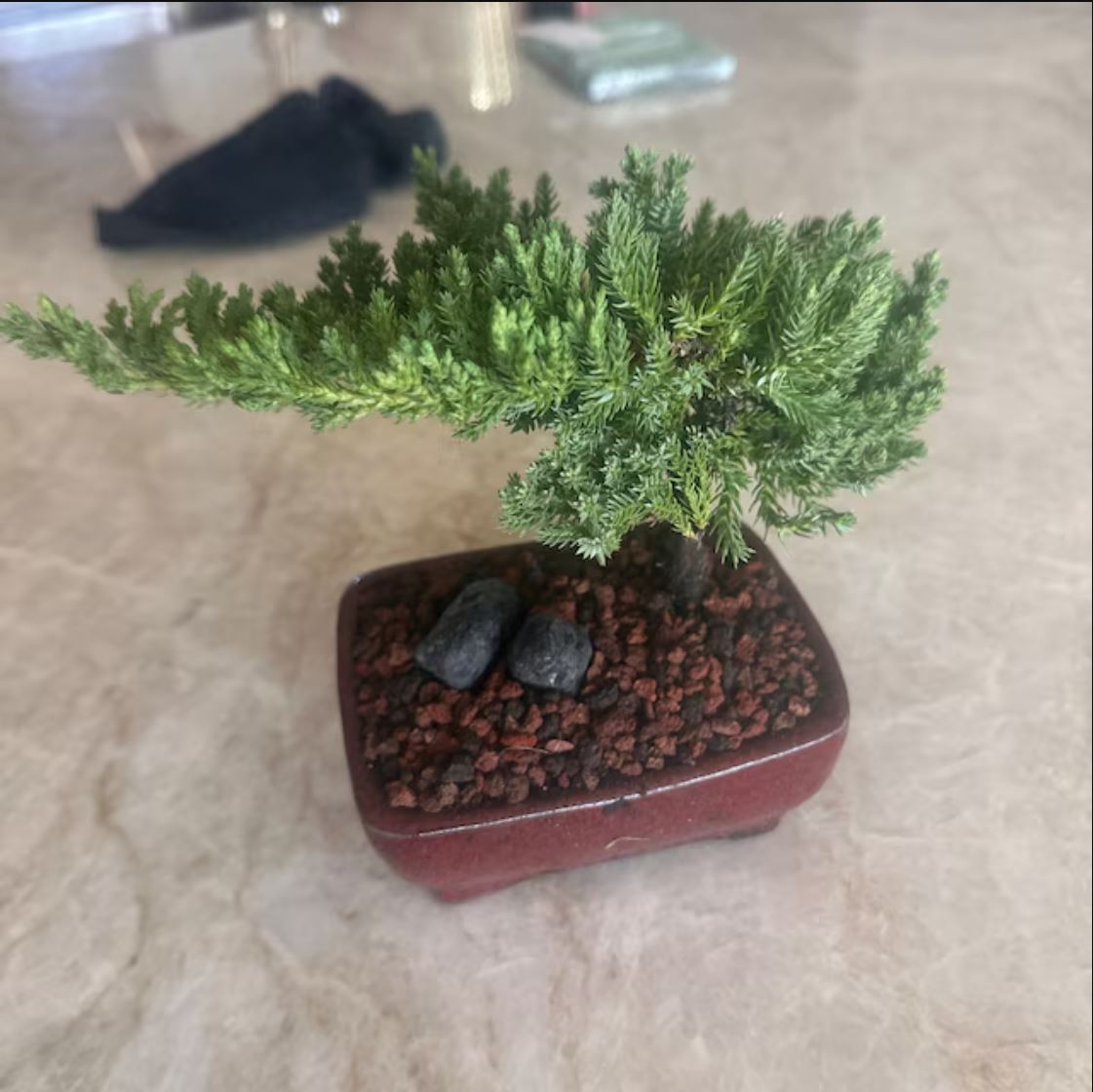

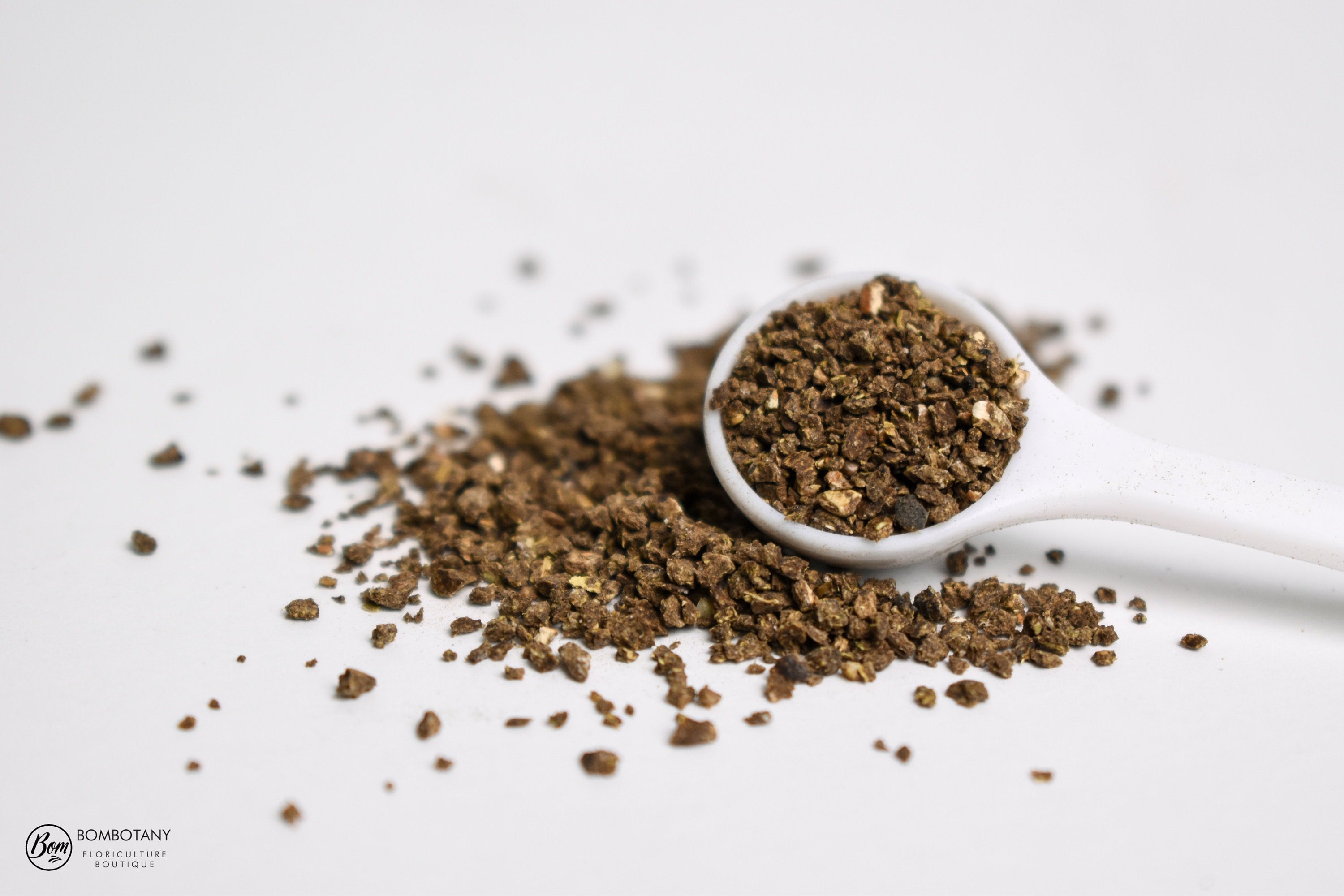
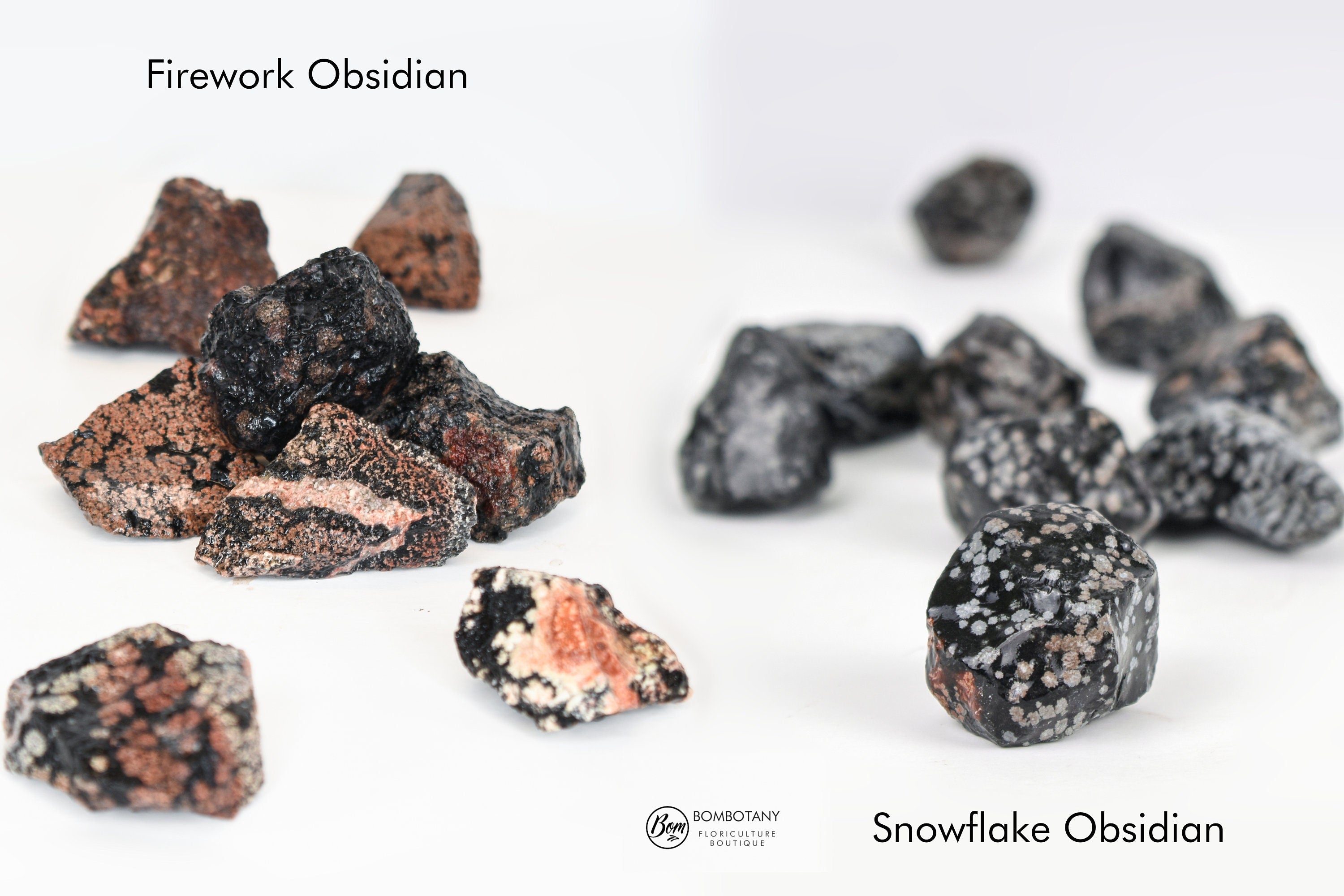
Leave a comment: